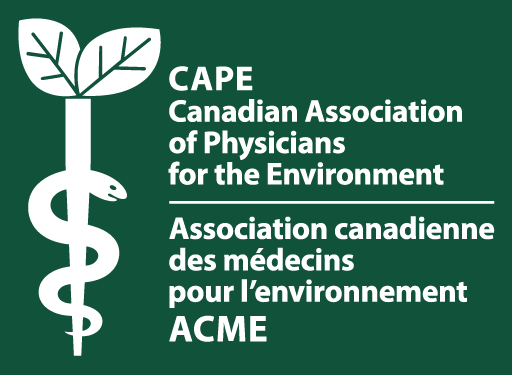*Reprinted with the permission of Dr. Trevor Hancock. The following reflections by Dr. Trevor Hancock, a co-founder of CAPE, highlight the problems and consequences of Canada’s flawed system of pesticide regulation. This column originally appeared in the Victoria Times-Colonist.
Last week, I wrote about the devastation of the world’s insect population, caused to a significant extent by intensive farming and pesticide use. The management of pesticides in Canada has been a travesty for decades, but this failure of governance to protect human health and the environment is hardly a new problem.
Fifty-seven years ago, in Silent Spring, Rachel Carson named the problem: We live in “an era dominated by industry, in which the right to make a dollar at whatever cost is seldom challenged.” Carson’s biographer, Linda Lear, notes on her website that: “Carson believed the federal government was part of the problem identified human hubris and financial self-interest as the crux of the problem.”
This is very clear when it comes to regulating pesticides. I cut my environmental-health teeth fighting the pesticide industry and Health Canada in the early 1980s, when I was an associate medical officer of health in the City of Toronto. We were recommending a ban on 2,4-D in the city, on the grounds that controlling dandelions in parks and gardens — known as cosmetic pesticide use — was not worth the potential health effects. I came to an early recognition that the Health Protection Branch of Health Canada functioned more like the industry-protection branch.
I went on to co-found the Canadian Association of Physicians for the Environment. For years, CAPE has fought to reduce or eliminate both cosmetic and in some cases agricultural pesticide use. It has done so based on evidence, the application of the precautionary principle, and its professional and public-interest concern in protecting health and the environment.
In its work, CAPE and its many community and environmentalist partners have tangled constantly with the Pest Management Regulatory Agency, established within Health Canada in 1995. On its website, CAPE notes “gaps and flaws in this review process leave Canadians inadequately protected from health and environmental risks associated with the use of toxic pesticides.”
But CAPE is not alone in its criticism. The federal commissioner of the environment and sustainable development, part of the office of the auditor general, has undertaken three reviews of the agency since 2003, and they disclose some serious flaws. In 2003, the commissioner reported: “Overall, we conclude that the federal government is not managing pesticides effectively. We found weaknesses in many areas … raises serious questions about the overall management of the health and environmental risks associated with pesticides.” But note, this comes after decades of criticism from health and environmental organizations acting in the public interest — and still the PMRA could not get it right.
Again in 2015, the commissioner had serious concerns, noting numerous problems and concluding that in important areas, PMRA “had not always acted in a timely manner to fulfil its statutory objective of preventing unacceptable risks to the health of Canadians and the environment from the use of pesticides.” In fact, for three of the most widely used pesticides in Canada — atrazine, glyphosate and neonicotinoids as a class — we have lower standards and are years, if not decades, behind Europe in protecting the health of Canadians.
Atrazine, a herbicide that is still registered and used in Canada, although declining, was banned in Europe in 2003. Glyphosate is a widely used herbicide that is a probable human carcinogen, according to the World Health Organization — but not according to the PMRA, which seems to think it knows better. And neonicotinoids are widely used insecticides that are linked to harm to bees and other beneficial insects. The EU banned them for all outdoor agricultural use from the end of 2018, but the PMRA has taken only small steps to reduce their use.
The fundamental problem is that the PMRA — and government more generally — does not see its prime function being to protect the health and well-being of the public or the environment. Instead, its key objective seems to be the short-term and purely profit-oriented aims of industry.
In their blind pursuit of economic growth and their misplaced confidence in dodgy corporate science, governments turned a blind eye to all the warnings, while we all suffer the consequences.
With the health of Canadians at stake, CAPE and others continue to press for changes in the regulation of pesticides in this country. A June 2018 letter from four national non-for-profit organizations (including CAPE) to the federal Chief Science Advisor points out some specific issues around approval decisions on neonicotinoids, glyphosate and atrazine. A coalition of groups is seeking multi-party commitments to improvements in pesticide evaluation in the lead-up to the federal election expected later this year.
